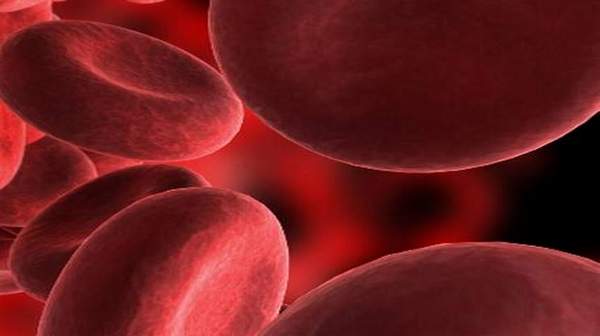What's in this article?
What does High Hemoglobin mean?
High hemoglobin levels mean that measured hemoglobin levels are above the upper limits of normal for the age and sex of the person (see above normal values). For example, a 19 year old that has a detected hemoglobin level of above 17.7 g/dl would have a high hemoglobin level. Some causes for high hemoglobin levels are as follows:
- Living at a high altitude
- Lung disease (emphysema, COPD)
- Cancer
- Tobacco smoking
- Bone marrow disorders (polycythemia vera)
- Overdose or inappropriate use of the drug epoetin alfa (Epogen, Procrit)
- Blood doping (adding RBC’s by IV to the bloodstream)
Causes of High Hemoglobin
High hemoglobin count may occur because:
- Your red blood cell production increases to compensate for chronically low blood oxygen levels due to poor heart or lung function.
- You have a bone marrow dysfunction that results in increased production of red blood cells.
- Your red blood cell production increases to compensate for a limited oxygen supply in higher altitudes.
- You smoke.
- You’ve taken drugs or hormones, most commonly erythropoietin (EPO), that stimulate red blood cell production. You’re not likely to get a high hemoglobin count from EPO given to you if you have chronic kidney disease. However, EPO doping getting injections to enhance athletic performance can cause a high hemoglobin count.
Specific disorders or other factors that may cause high hemoglobin count include:
- COPD
- Dehydration
- Emphysema
- Heart failure
- Kidney cancer
- Liver cancer
- Living at a high altitude, where there’s less oxygen in the air
- Other types of heart disease
- Other types of lung disease
- Polycythemia vera
- Smoking, which may result in low blood oxygen levels
Possible Causes of High Hemoglobin Count
High hemoglobin count differs from high red blood cell count, as each cell may carry the same amount of oxygen. Therefore, it is normal if one has a high hemoglobin count, despite having a low blood count. An elevated hemoglobin count is observed when there is an increased red blood cell production, to compensate for low oxygen in the blood required by the tissues.
- Sometimes, the kidney releases too much erythropoietin, resulting in a high red blood cell count.
- Polycythemia vera, a dysfunctional bone marrow disease, also increases red blood cell production.
- Acute dehydration can cause high hemoglobin, however, hemoglobin levels return to normal, once the fluid balance is restored.
- Congenital heart disease, heart failure, cor pulmonale, and other heart problems, associated with high blood pressure in the arteries of the lungs, can also increase hemoglobin levels.
- Pulmonary fibrosis, which is a condition that is characterized by formation of excess fibrous connective tissues in the lungs, also tends to increase hemoglobin levels.
- Emphysema, chronic obstructive pulmonary disease (COPD), and other lung diseases could also be contributing factors for high levels of hemoglobin.
- People living in high altitudes also have high levels of hemoglobin, as high altitude means lesser level of oxygen, resulting in increased production of blood cells.
- Anabolic steroids that are used for increasing muscle mass, along with certain drugs can also stimulate red blood cell production.
- Kidney and liver cancer may also lead to elevated hemoglobin levels in the blood.
- Smoking drops the level of oxygen in the lungs, so to balance out the deficiency, the body raises levels of hemoglobin.
What is the Hemoglobin A1c test?
Hemoglobin A1c or glycosylated hemoglobin is a rough indication of blood sugar control in people with diabetes mellitus over the preceding three months. As more glucose (blood sugar) circulates in the blood on a daily basis, more hemoglobin molecules are bound to glucose. Normal hemoglobin A1c level ranges between 4% to 5.9%. As this number reaches 6% or greater, it signifies poorer diabetes control.
Hemoglobin A1c of 6% roughly correlates with average blood sugar level of 135 mg/dL (milligrams per deciliters) over the previous three months. Each 1% increase in hemoglobin A1c above 6% represents average blood sugar of approximately 35 mg/dL over 135 mg/dL. For example, hemoglobin A1c measurement of 7% corresponds to average blood sugar level 170 mg/dL in the last three months.





